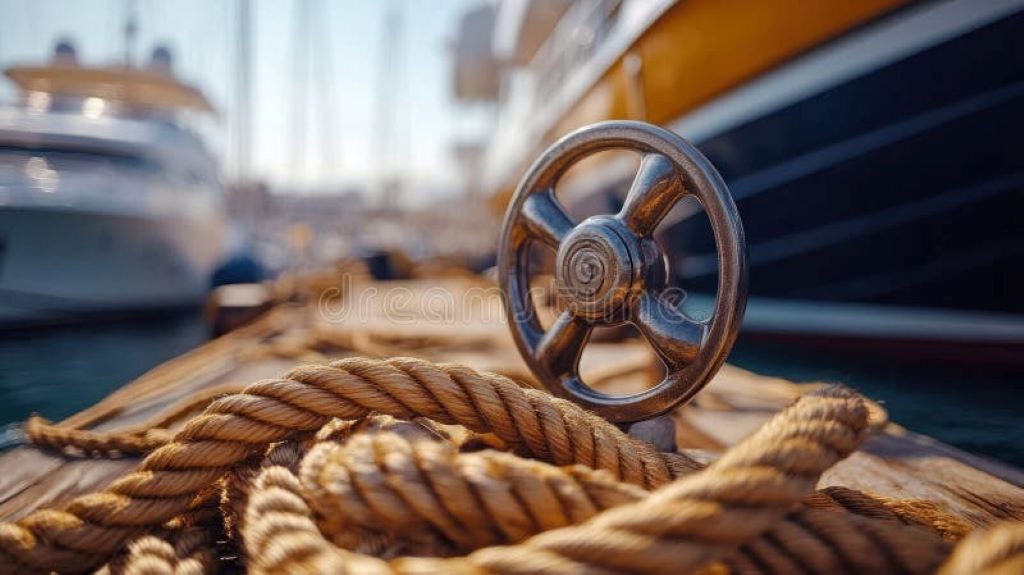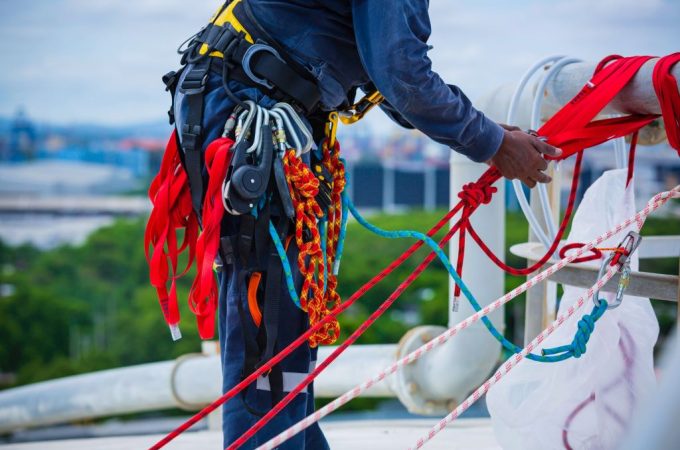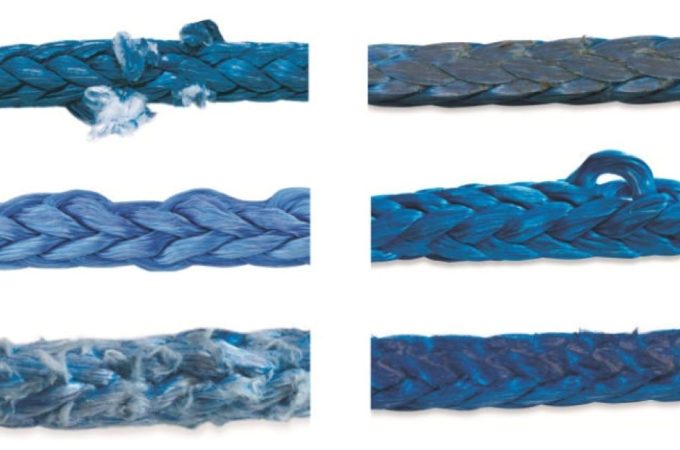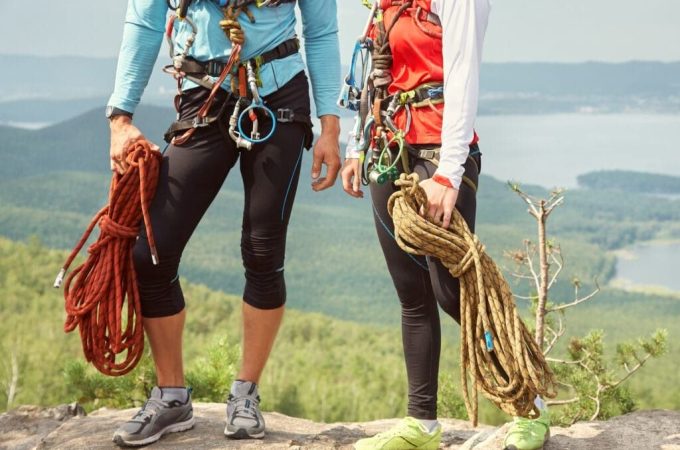
Strong Lines, Safe Harbors: The Role of Rope in Maritime Safety
Picture a massive cargo ship swaying against a stormy dock, its only tether to safety a few sturdy ropes. These unassuming lines hold the power to prevent catastrophe, securing vessels and protecting lives in the unpredictable maritime world. Ropes are the unsung heroes of marine safety, anchoring ships, towing vessels, and ensuring operational stability. This article delves into the critical role of rope in maritime safety, examining its various types, innovations, and real-world applications. With statistics, expert opinions, and practical solutions, readers will uncover why choosing the right rope is a matter of life and death.
Contents at a Glance
ToggleThe Vital Role of Ropes in Maritime Operations
Ropes, or mooring lines, secure ships to docks, preventing collisions and ensuring stability during cargo operations. Without reliable ropes, vessels risk drifting, endangering crew, cargo, and infrastructure. According to the European Harbour Masters’ Committee, 95% of mooring-related injuries stem from rope or wire failures, with 60% occurring during mooring operations. This staggering statistic underscores the need for high-quality ropes. Experts argue that substandard ropes increase snap-back risks, where a broken line recoils at speeds up to 800 km/h, causing severe injuries or fatalities. Conversely, some operators prioritize cost over quality, risking safety. Investing in durable ropes mitigates these dangers, ensuring safer harbors.
Types of Mooring Ropes: Strengths and Trade-offs
Maritime ropes come in various materials, each with unique properties suited to specific tasks. Nylon ropes, prized for elasticity, absorb shock loads during stormy conditions, making them ideal for mooring. However, they stretch under heavy loads, which can compromise precision. Polyester ropes offer lower elongation and UV resistance, perfect for long-term mooring, though they cost more. High Modulus Polyethylene (HMPE) ropes, like Dyneema, boast exceptional strength-to-weight ratios and minimal stretch, reducing snap-back risks. Yet, their high cost deters some operators. Polypropylene ropes, lightweight and affordable, suit lighter applications but lack durability. Choosing the right rope depends on vessel size, environmental conditions, and budget, balancing safety with practicality.
Snap-Back Zones: The Hidden Danger
Snap-back zones pose one of the deadliest risks in mooring operations. When a rope breaks under tension, it can whip back with lethal force. The UK P&I Club reports that 53% of mooring accidents involve snap-back, with one in seven resulting in fatalities. Traditional snap-back zone markings on decks often mislead the crew into a false sense of security, as the entire mooring deck is a potential hazard. Modern guidelines, like the COSWP 2015 edition, recommend clear signage over specific markings. Some experts advocate for Reduced Snap-Back (RSB) ropes, which minimize recoil energy. Others argue that training and awareness are equally critical. Combining RSB ropes with rigorous crew training offers a robust solution to this peril.
Innovations in Rope Technology: A Safer Future
Recent advancements in rope technology have revolutionized maritime safety. Katradis Marine Ropes’ 24-12 RSB rope, compliant with MEG4 guidelines, reduces snap-back risks through innovative materials and manufacturing. These ropes undergo rigorous lab and real-world testing, ensuring durability in harsh conditions. Similarly, Wilhelmsen’s Snap Back Arrestor (SBA) ropes, tested in Slovakia and Norway, prevent injuries by absorbing recoil energy. Some skeptics question the cost-effectiveness of these high-tech ropes, arguing that traditional materials suffice with proper maintenance. However, the long-term savings from fewer accidents and replacements justify the investment. These innovations demonstrate how technology can transform maritime safety, protecting crews and vessels alike.

The Human Factor: Training and Safety Culture
Even the strongest ropes fail without proper handling and maintenance. Poor training and fatigue contribute to 60% of mooring incidents, according to the UK P&I Club. Inexperienced crews often stand in snap-back zones or mishandle lines, increasing risks. Regular training programs, like those offered by America’s Boating Club, teach essential knot-tying and line-handling techniques. Additionally, fostering a safety-first culture ensures the crew prioritizes personal protective equipment (PPE) and hazard awareness. Some operators resist investing in training, citing time constraints, but the cost of accidents far outweighs training expenses. Combining high-quality ropes with skilled crews creates a safer maritime environment.
Environmental Impact: Sustainable Ropes for Greener Harbors
Sustainability is reshaping the maritime industry, and ropes play a role. Traditional ropes, like manila, degrade quickly, requiring frequent replacements. Modern synthetic ropes, such as Marlow’s bio-based Dyneema, use waste from the pulp industry, reducing environmental impact while maintaining strength. Katradis emphasizes eco-friendly manufacturing, using green energy, and waste management practices. Critics argue that synthetic ropes contribute to microplastic pollution, but their longevity reduces overall waste compared to natural fibers. By choosing sustainable ropes and maintaining them properly, operators can enhance maritime safety while supporting environmental goals, creating a win-win for harbors and ecosystems.
Maintenance: Extending Rope Lifespan and Safety
Regular maintenance is crucial for rope performance and safety. Saltwater, UV exposure, and abrasion weaken even the toughest ropes. Inspecting lines for frays, kinks, or wear before each operation prevents unexpected failures. The UK P&I Club notes that 24% of vessels store ropes improperly on drum ends, risking damage. Best practices include securing lines to bits, using synthetic coatings, and storing synthetic ropes away from sunlight. Some operators neglect maintenance to cut costs, but this shortsighted approach invites accidents. Scheduled inspections and timely replacements ensure ropes remain reliable, safeguarding crews and vessels in demanding conditions.
Real-World Impact: Case Studies in Rope Safety
Real-world incidents highlight the critical role of ropes in maritime safety. In 2021, Kassian Maritime’s bulk carrier faced gale-force winds in El Salvador, snapping four mooring lines. Wilhelmsen’s SBA ropes prevented injuries, proving their effectiveness. Conversely, a 2023 Australian report cited 227 mooring incidents over five years, with 22% causing injuries due to substandard ropes or poor handling. These cases illustrate the stakes involved. High-quality ropes, combined with adherence to MEG4 guidelines, can prevent tragedies. Operators who prioritize safety over cost reap the benefits of fewer accidents and smoother operations.
Solutions for Safer Harbors
To enhance maritime safety, operators must adopt a multi-faceted approach. First, invest in high-performance ropes like HMPE or RSB, which reduce snap-back risks. Second, implement regular crew training on line handling and hazard awareness. Third, maintain ropes through consistent inspections and proper storage. Finally, adhere to international guidelines like MEG4 and SOLAS for equipment standards. Some argue these measures are costly, but the financial and human toll of accidents is far greater. By prioritizing quality, training, and compliance, the industry can ensure safer harbors for all.
Featured Snippet: Why Are Mooring Ropes Critical for Maritime Safety?
Mooring ropes secure vessels to docks, preventing drift and collisions in harbors. High-quality ropes, like HMPE or nylon, offer strength and elasticity to withstand harsh conditions. Poor-quality ropes risk snapping back, causing 53% of mooring accidents, with one in seven fatal. Innovations like Reduced Snap-Back ropes and Snap Back Arrestors minimize recoil dangers. Regular maintenance and crew training further enhance safety. Choosing the right rope ensures vessels and crews remain protected, making them vital for safe maritime operations.
FAQs: Strong Lines, Safe Harbors
- What are the best materials for mooring ropes?
Nylon, polyester, and HMPE (like Dyneema) are top choices due to their strength, elasticity, and durability, depending on the application. - How do snap-back zones endanger crews?
Snap-back zones are areas where broken ropes recoil at high speeds, causing 53% of mooring accidents, often with severe injuries. - Why is rope maintenance important?
Regular inspections prevent failures from wear, UV damage, or abrasion, extending rope lifespan and ensuring safety. - What are MEG4 guidelines?
MEG4 provides standards for mooring line design, testing, and retirement to enhance safety and reduce accidents. - How do sustainable ropes benefit the environment?
Bio-based ropes, like Dyneema, reduce waste and carbon footprint while maintaining high performance. - What role does training play in rope safety?
Training ensures crews handle ropes correctly, avoid snap-back zones, and use PPE, reducing accident risks. - Can affordable ropes be safe?
Affordable ropes like polypropylene suit lighter tasks but lack the durability of premium options for heavy-duty operations.
Final Thought
Ropes are the backbone of maritime safety, holding the line between chaos and security. Their strength, innovation, and proper use save lives and protect harbors. By embracing advanced materials, rigorous training, and sustainable practices, the industry can navigate toward a safer, greener future.
Call to Action
Ready to enhance maritime safety with top-quality ropes? Explore innovative solutions at Katradis Marine Ropes and join the movement for safer harbors. Share your thoughts or questions below to keep the conversation alive!
References
- European Harbour Masters’ Committee and UK P&I Club statistics on mooring incidents.
- Katradis Marine Ropes on RSB and MEG4 guidelines.
- Wilhelmsen’s Snap Back Arrestor case study.
Read More:





